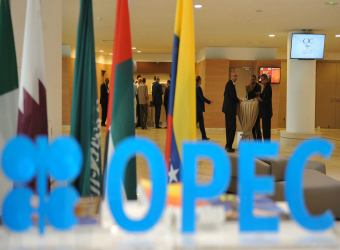OPEC’s last week agreement to cut oil production will be creating an opportunity for U.S. oil producers to get crude into the hands of very valuable customers: Asian crude buyers.
The members of the Organization of the Petroleum Exporting Countries have vowed to cut a collective 1.2 million barrels a day and are asking other oil producers to reduce output by 600,000 barrels a day.
The long-awaited output limits are expected to make it possible for U.S. producers to ply the expensive, complicated route to Asia from the United States. The stage was set when the United States lifted a 40-year-old ban on exporting American crude last December. Since then, much of the oil has gone to Europe, but now industry heavyweights are attempting to extend those exports to Asia, a region whose oil consumption is growing.
“It is still in testing the phase. The export ban was lifted last last year, and since then, we’re seeing this evolution of the U.S. export industry, as there’s this period of exploration to figure out how best to get these exports out, how to make this work economically,” said Matt Smith, director of commodity research at tanker-tracking firm ClipperData.
This week, Reuters reported that British oil giant BP was using its global shipping and trading network to embark upon an ambitious four-month pilot project of sorts: charting a 16,000-nautical-mile sea route involving seven tankers and a number of transfers to profitably get crude oil from Texas to Asia.
The largest crude carriers can’t dock in U.S. ports, so shippers have to spend more time — and money — to transfer cargoes to bigger ships at offshore facilities. According to Reuters’ analysis of shipping data, the route went like this:
- BP used tankers capable of carrying 800,000 barrels to transport crude to much larger tankers offshore
- Those bigger tankers sailed around South Africa — they’re too big to pass the Panama Canal — to Malaysia, where their oil was distributed across Asia.
- Additional transfers brought the cargo to Thailand and Australia.
The operation involved about 3 million barrels of oil worth about $150 million, a small fraction of the global crude trade. However, the conditions are falling into place to make more shipments like this worth the investment.
Tanker rates are expected to fall as OPEC output reductions leave the market supplied with more vessel capacity than it needs. Those lower rates will offset the added costs of getting U.S. crude off the Gulf coast on smaller ships and transferring it to large vessels.
“If OPEC actually institutes their cuts, there’s no doubt that tanker rates are going to fall, especially” rates for VLCC rates,” said Andrew Lipow, president of Lipow Oil Associates.
The United States has built up its infrastructure to bring crude to the Gulf in recent years, Lipow said. That makes it easier for a big integrated oil company like BP to buy up U.S. crude from a number of sources and lump it into a big shipment.
Another key is the difference in price — known as the spread — between U.S. crude and other, typically more expensive international benchmarks such as Brent and Dubai crude. All of those prices have increased following OPEC’s production cut, but the less U.S. crude rises relative to Brent and Dubai crude, the more attractive it becomes to overseas buyers.
“Recently, due to the OPEC decision, that has blown that spread out again and that will only further serve to incentivize higher exports,” Smith said.
It’s difficult to say just how wide the spread needs to be, because U.S. crude exports have been rising even when the spread is fairly narrow, he added.
U.S. oil is also attractive because it is easier to refine than other crude oil, analysts said.
Source: CNBC
